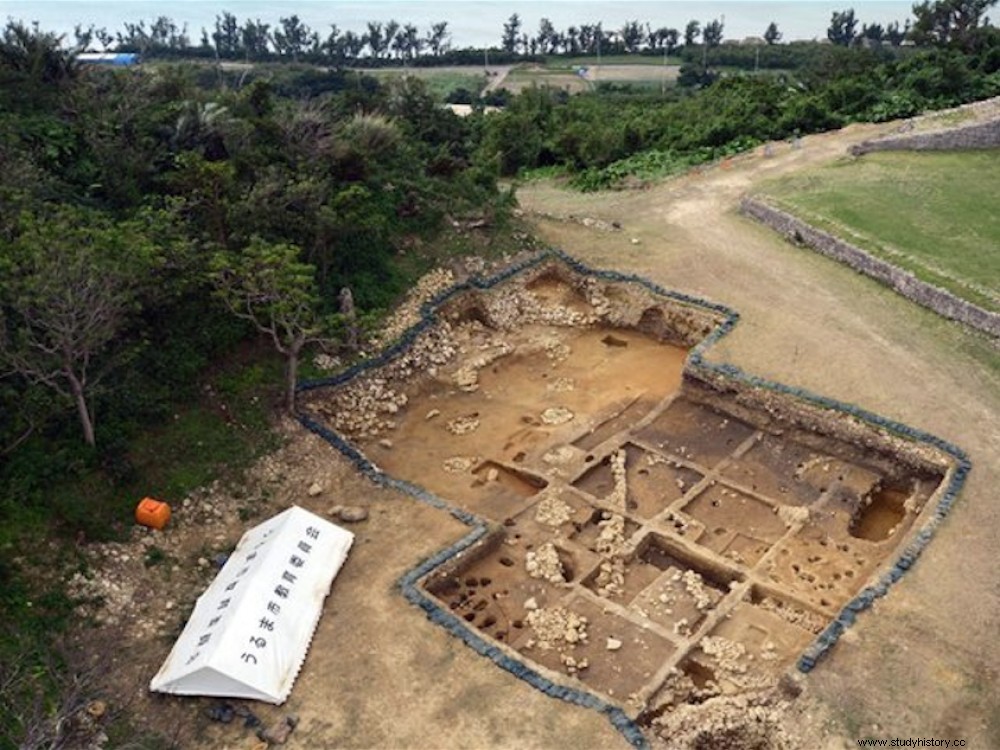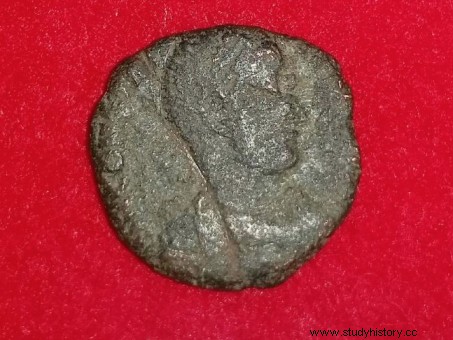Roman coins from the 4th century AD, found in the ruins of a medieval Japanese castle, testify to the indirect commercial exchanges that may have existed between the Far East and the West from the earliest antiquity.

Excavations of the ruins of Katsuren Castle, in Uruma, on the island of Okinawa (Japan), where ancient Roman coins were found.
Japanese archaeologists, working on the island of Okinawa, announced at the end of September that they had unearthed coins from the Roman Empire. These were among the remains found in Katsuren Castle, a feudal residence (12th-18th century) excavated since 2013, listed on the UNESCO World Heritage List. These four small copper coins dated from 300 to 400 AD, were mixed with a dozen other currencies including some Ottoman (17th century) according to Toshio Tsukamoto, the researcher behind their authentication. Submitted for analysis to Hiroki Miyagi, archaeologist at the International University of Okinawa, these four badly eroded pieces revealed on X-ray examination a portrait of the Roman emperor Constantine 1st (272-337), as well as on a another, a soldier armed with a spear.

Perplexed, the Japanese specialists then wondered how ancient Roman coins could have reached this point, the links between the Roman Empire and the Empire of the Rising Sun not having been established to date... "We we don't think there was any direct contact between the West and Ryukyu, on the island of Okinawa, but we do know that there was intense trade with China and Asia of the Southeast between the 14th and the 19th century , explained Hiroki Miyagi to the daily The Japan Times. These coins may have arrived via China, as Chinese traders may have obtained them from Muslim merchants ". From the 8th century, under the Tang dynasty, the presence of Muslim merchants is indeed described in Canton, in southern China. It was also during this same period that transactions between the two countries intensified.
This announcement echoes a recent one reporting the discovery of two "possible" 2nd-century Chinese skeletons found in a Roman cemetery in London. This is enough to remind us that the links between the West and the Far East were closer than is generally thought, as evidenced by the Chinese Annals:these report the existence of exchanges between the Roman Empire and China, via the world Parthians and India, from the second century AD. Other texts affirm that after 166, Roman merchants were able to approach the coasts of the mysterious kingdom of Funan, a region located between present-day South Vietnam and Cambodia, between the 1st and 4th centuries of our era (read Sciences et Avenir sept . 1999).

The plain of Oc-Eo was then an incomparable place of communication. Ships from the China Sea and the Gulf of Siam went very far inland. In 1944, French archaeologists had discovered gold coins there with the effigy of Antoninus Pius (dating from 152) and Marc Aurèle (161-180)!
"These Far East-West exchanges, which will never really be interrupted, will on the other hand experience several phases of significant slowdowns:in particular between the 4th and 8th centuries, and the appearance of the first great Muslim empires, which will see the development of new caravan routes to bypass the conflict zones between Byzantium and Persia; then in the 14th century, when China closed in on itself ", said Christian Grataloup, professor at the University of Paris-VII-Denis Diderot, specialist in geohistory.
